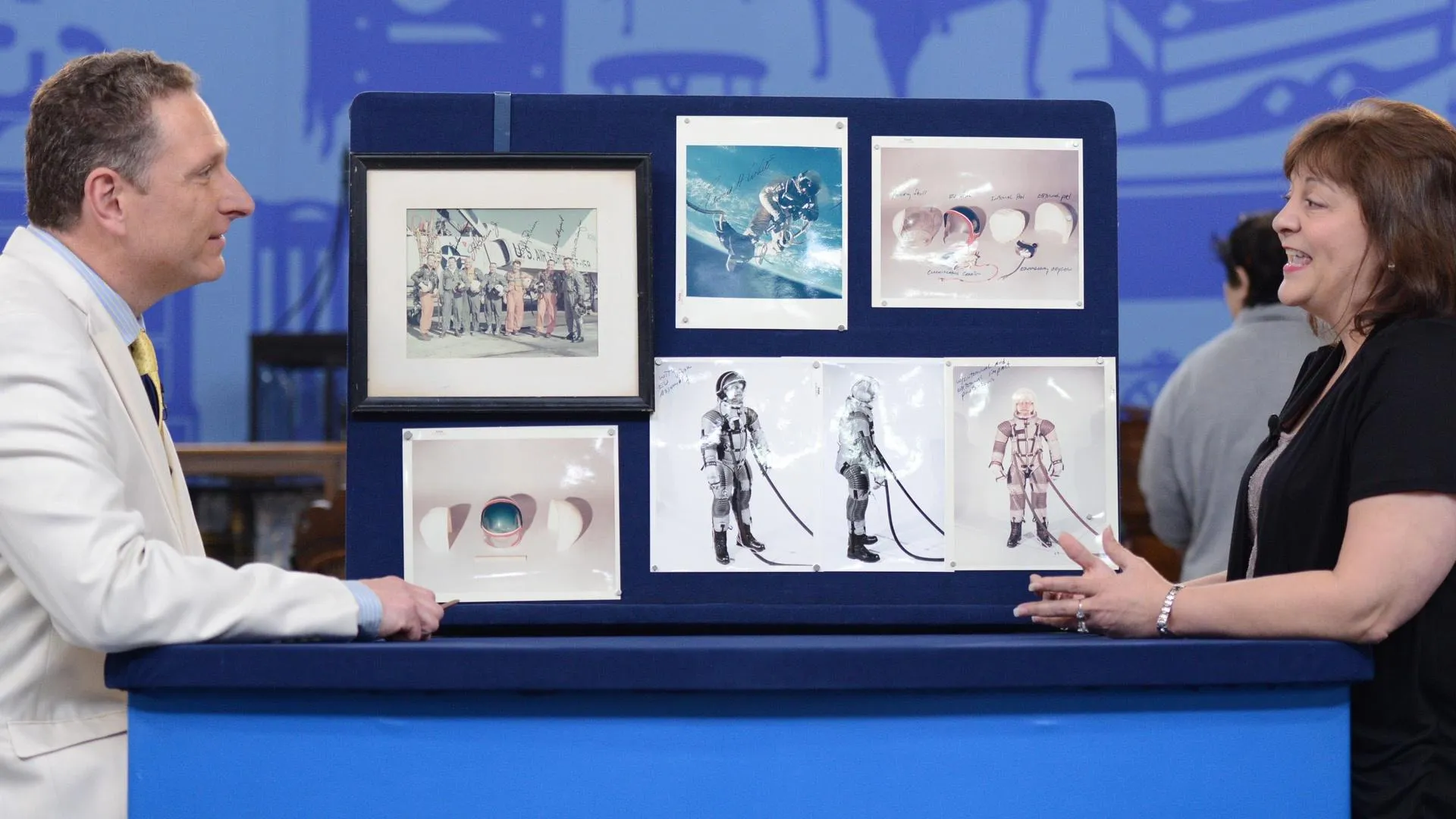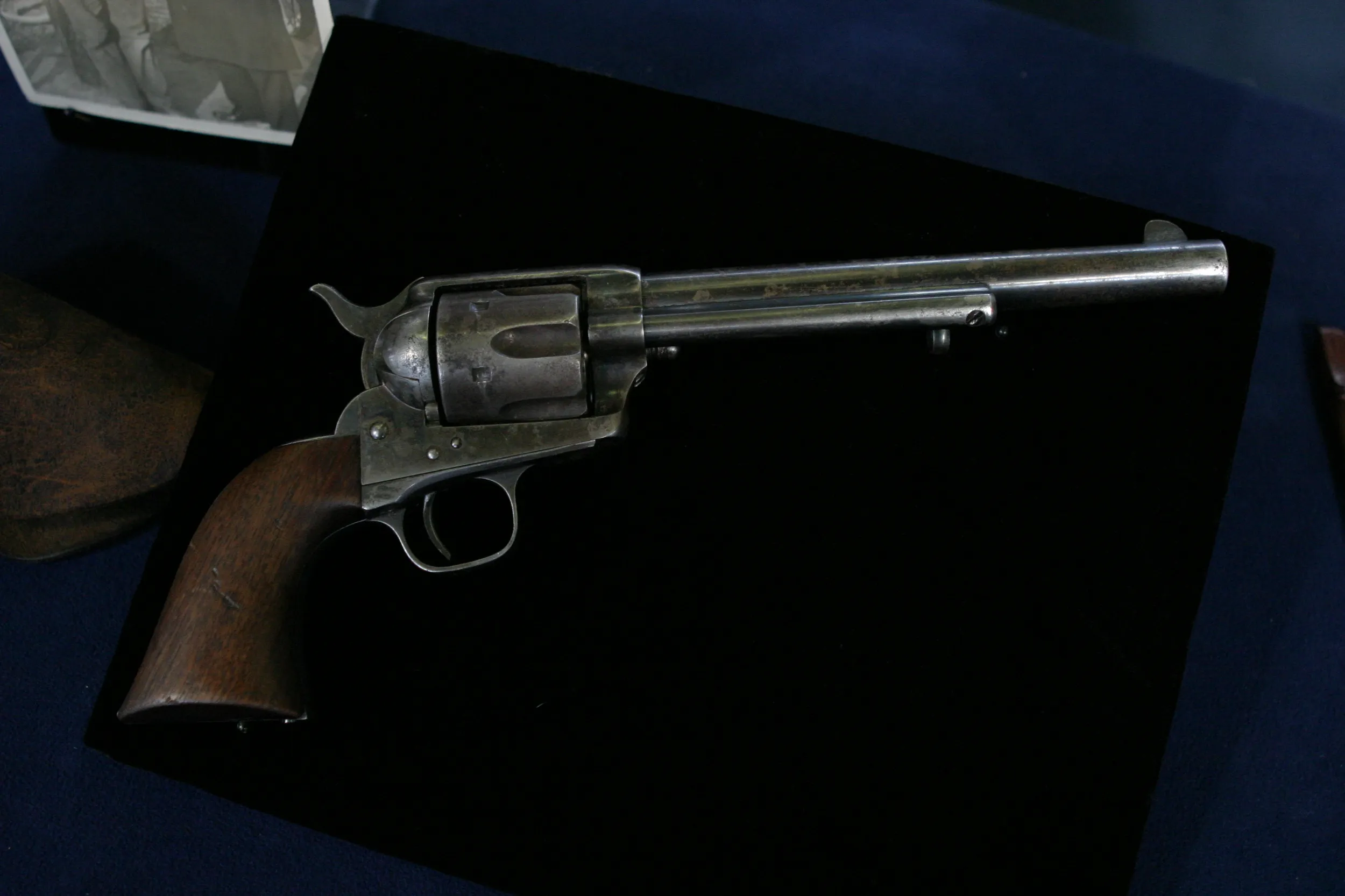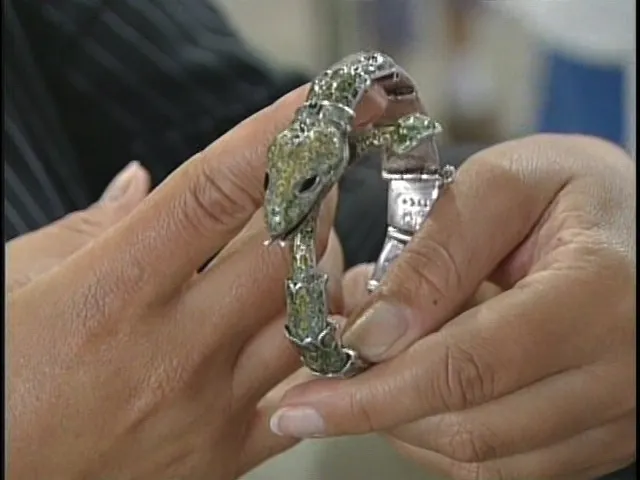APPRAISER: You brought us this great sports pin collection from your grandfather. Who was your grandfather and how'd he get these?
GUEST: Sid Feder. He was one of the first sports writers for the Associated Press, and I guess he collected them as he attended various championships: the World Series, NFL championships and the like.
APPRAISER: That's great. What kind of a life did he lead in New York as a writer?
GUEST: I guess they would be considered in the celebrity sphere, him and my grandmother. They had a lot of associations in the sports world, writing, and the literary world. Apparently he knew Frank Sinatra pretty well.
APPRAISER: Really? They hung out?
GUEST: Yeah, there's a story that when he was in the hospital, Frank Sinatra ended up paying his hospital bills.
APPRAISER: Wow, so he led quite the life in the '30s, '40s, and '50s.
GUEST: Apparently, as my grandmother would relate, they had quite the life, yes.
APPRAISER: And this is his legacy to you.
GUEST: And this is his legacy to me.
APPRAISER: Well, you know, the history of sports press pins really came about in the early 1900s. Now, your grandfather, it appears from these, started in 1936 here, and we go to 1953 here. This collection covers World Series, NFL championships, and All Star games from 1936 to 1953. He was able to be a sports writer really in probably one of the sweetest times to be a sports writer in New York. You had the Yankees, it seemed like they were in virtually every World Series. The Giants weren't far behind, and neither were the Brooklyn Dodgers. He also made it to some NFL championships with the Giants as well. Now, when we look at press pins, we value them by the age, the condition, the actual way that they look, how ornate that they are, and the team that the represent. Now, you have a number of valuable pins here. One of my favorites and one of the most valuable is this, which is the 1936 World Series, Joe DiMaggio's rookie year. That pin alone is probably about $1,000. This pin, which is from 1938, and you see how that pops with the gold? That's really rare, too, from 1938. It's almost like it was never used. That pin is about $1,300. These three pins you'll notice are not nearly as ornate or colorful as the rest. They're made by Dieges and Clust, and they were japanned, as you see. They're enameled, these pins, but not these, and that's because they're from World War II.
GUEST: Oh, that makes sense.
APPRAISER: Materials were scarce. Now, there's one other very interesting pin here, 1946 Brooklyn Dodgers. You know why that's interesting? They call it a phantom pin. They never played in the World Series that year.
GUEST: Really?
APPRAISER: They tied with the Cardinals, they lost the playoffs with the Cardinals, and the Cardinals ended up in the World Series. Very cool, you'd never expect that. And has anyone ever offered your family money for these?
GUEST: Apparently, in the early '70s, somebody made an offer to my mother for the collection.
APPRAISER: And how much was that?
GUEST: Roughly $10,000 from what I've heard.
APPRAISER: Well, you know, that was a very fair offer in the '70s. Looking at these today, if you were going to add them up individually, it would be an auction value of about $15,000 individually. However, I'd place a premium on these for two reasons. One, they're this collection from '36 to '53, which represents the Yankees specifically, and they have the provenance of your grandfather. So if I were insuring these, I'd insure these for $20,000.
GUEST: That's good to know! That's good to know, because they're not going anywhere.











